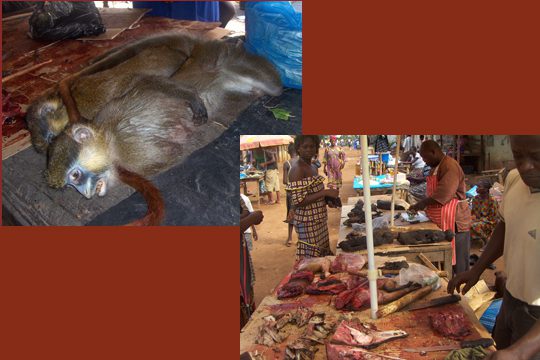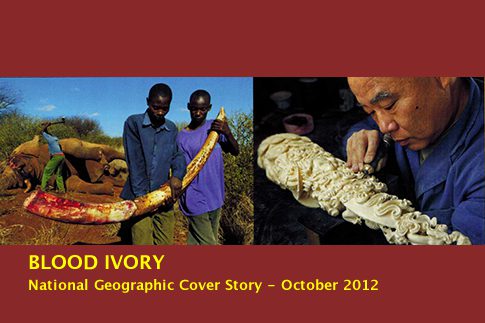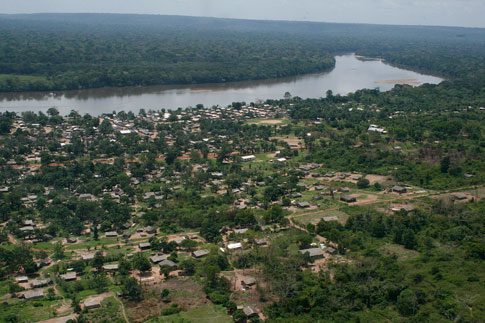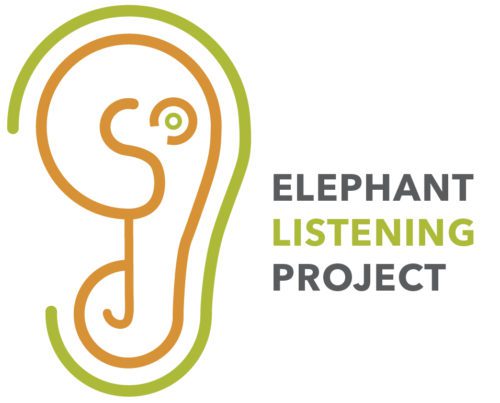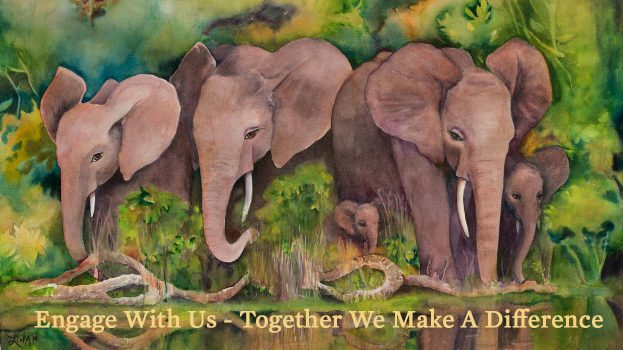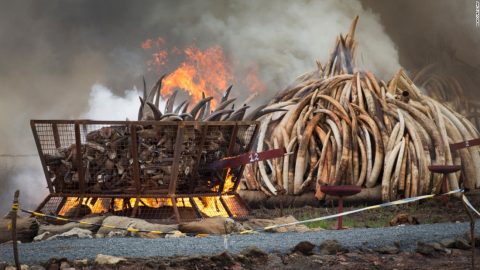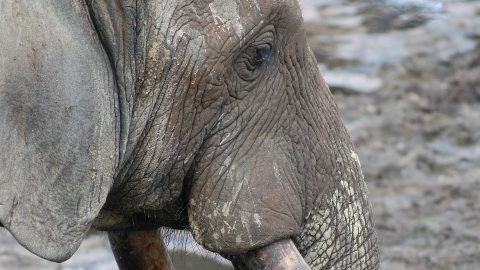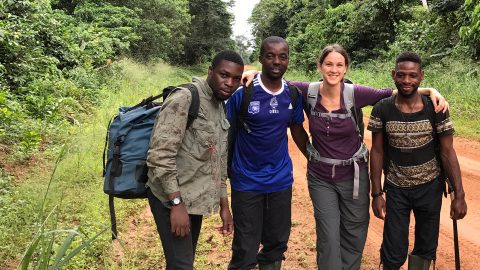Threats
A combination of threats unique to forest elephants
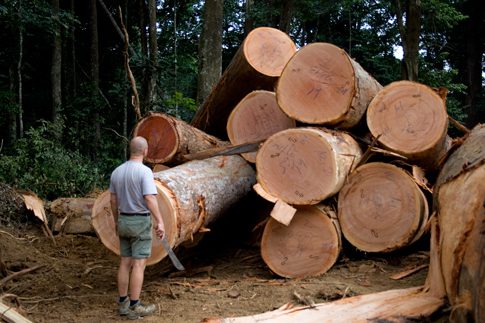
Resource Extraction: Balancing development needs with forest protection. 
An International Market: Unacceptable at the international level – a harder question locally. 
Poaching for Ivory: A scourge that CAN be stopped! 
Human Population: Accommodating millions more and finding resources to match.
Forest elephants face the threats of poaching for ivory and habitat loss common to other elephants, but they also face increased pressure from hunting for meat, accelerating extraction of natural resources, and little development of an ecotourism industry that could provide alternative value. Together with their slow reproductive rate, these threats raise huge challenges to their conservation

Poaching
No ivory is more desirable than that of forest elephants. The ivory of forest elephants is harder and has a slightly rose colored tint. These characteristics make for better carving, and demand a higher price in the marketplace. This preference is most evident in Japan, where ñharderî ivory has almost monopolized the trade for decades. Premium quality bachi, traditional Japanese plucking tools for the stringed instrument called a “shamisen”, are made exclusively from forest elephant tusks.
In the dense and often trackless expanses of rainforest in Central Africa, poaching activity is particularly difficult to detect. Levels of off-take are mostly estimated from ivory seizures at ports and these have been on the rise. As protection becomes more effective in East and Southern Africa, where anti-poaching teams have been operating for decades and where small planes can be used for surveillance, the sparsely populated and often poorly protected forests of Central Africa have become increasingly attractive to organized poachers. In selected places (e.g. Nouabalé-Ndoki National Park in Congo), vastly improved anti-poaching rapid-response systems are beginning to have an effect. More poachers are successfully prosecuted and put into jail for longer.
Killing for the Bushmeat Trade
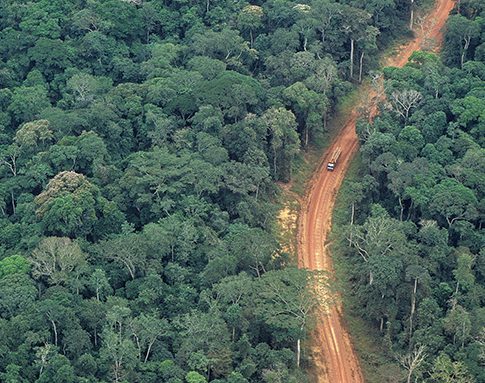
Ivory is not the only motivation that drives forest elephant poaching. Bushmeat from Central Africa has become an international business in recent decades, with markets for African rainforest animals reaching even New York and other major cities of the U.S. And disturbingly, hunting forest elephants for bushmeat has been on the rise. In many ways this illegal market poses the greatest threat not only to forest elephant but to all of the larger species of animal and bird resident in the forest. This is because hunting for meat targets elephants of all ages, even babies. In addition to the international market, many local economies depend on bushmeat as an important protein source. While this has been true for centuries, growing human populations have made this unsustainable. Progress is being made to reduce the incentives of supplying the bushmeat market. Large regional markets, and the international trade, require the transport of large amounts of animal protein which, in turn, requires the use of vehicles. Checkpoints on major roads and key railroad stations could help disrupt commercial networks. Vehicle access into remote areas is often limited to the roads created for extraction of natural resources (see next section) and these could be better controlled.
The greatest impact of logging activity at present is the construction of roads which open access to hunters. Careful control of access, vehicle inspections, and arrest for violators could make a huge difference and could be made part of the certification for ‘Sustainable Forestry’.
Extraction of Natural Resources
The extraction of natural resources like wood, minerals, and oil also has the potential to be extremely harmful. The most pervasive of these extractive industries is currently logging. In most Central African countries logging is, for now, quite selective – often less than one tree per acre. The relatively small openings that result from taking out a single tree may actually benefit forest elephants and other forest species, because new, tender vegetation comes up in the gap. The real problem is that these industries increase both access (roads) into the forest, and the number of people living there. Great strides have been made with the increased demand for ‘sustainable’ wood products, which has made gaining internationally recognized certification an important economic requirement for large companies. This has helped reduce the damage to forest ecosystems. However, certification does not currently include requirements to close roads and monitor access by private vehicles.
A UNIQUE POTENTIAL
In spite of the rather grim situation with poaching for ivory and bushmeat, and the expanding extraction of natural resources in Central Africa, forest elephants offer us a unique opportunity. Forest elephants still live “normally”, in the sense that their movements through the rainforest, their social system, the ecological challenges they face are mostly as they have always been. They are the only elephant where this is true.
Although now greatly reduced from their ancestral range, there is still an enormous expanse of intact rainforest in Central Africa, mostly now in Gabon but also in the northern parts of the Republic of Congo, southwestern Cameroon, and southern Central African Republic. In these areas human population densities are the lowest in Africa. These countries all have designated some large areas as national parks as well as other areas with lesser protection. The challenges are (1) to increase the effectiveness of governmental bodies to ensure adequate protection and (2) to hold the line on creeping access for the extraction of resources.
For conservation NGOs like the Elephant Listening Project, the challenge is to discover the most important resources required by populations of elephants so that decisions can be made as to where protection must be focused, and to develop increasingly effective ways to monitor not only the health of elephant populations, but to monitor also the intrusions by human activity.
Conservation
 Anti-Poaching
Anti-PoachingAnti-poaching patrols are the major intervention used in central Africa. But are they effective?
 Our Solutions
Our SolutionsResearch, anti-poaching strategies, capacity-building, and outreach are the tools we are using to make a difference.
 Building Capacity
Building CapacityBuilding, training, and developing a support infrastructure for a new generation of conservationists
 Outreach
OutreachInforming a bigger circle of people, changing attitudes, making a difference.


